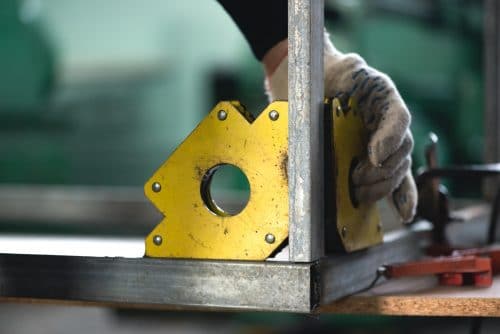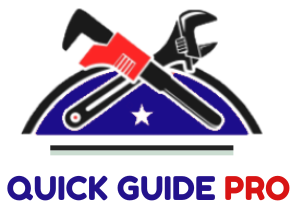If “how to use welding magnets to get the most out” is a question you have been asking yourself but still you have not obtained any satisfactory answer, then this post can help you.
I also had the same question. So, I did some research on it.
I hope, my findings will also help you to use this tool properly.
How to Use Welding Magnets Correctly

A welding magnet is an extra hand and a useful tool for any welding setup. This piece of equipment holds metal or ferromagnetic materials in place and at a variety of angles. It is a great help for accurate hold, alignment and quick welding set up. What’s more, they let you free your hands to work safely and smoothly on your welding project.

This tool is also a great alternative to welding clamps. Unlike clamps, welder magnets don’t leave dents around the edges of pieces that are being held together. Additionally, you won’t need any fasteners that might damage the work surface when removed later on.

Welding holders or magnets are available in various sizes and shapes. In general, they can be used on any metal surface. However, some are specially designed for specific materials such as aluminum or steel.
Some welding magnets are so strong that they can hold up to 250 pounds of weight which is excellent to handle a big project with intricate welds.
But to get the most out of your welding magnets, you have to know how to use them properly.
Your project may require just one piece of welder’s magnet while others may demand two or more pieces. However, the process of using welding magnets is pretty straightforward.
Here’s the correct way to use this small tool:
Take the metal workpieces that you plan to weld together. You can take two or more metal pieces at the same time.
Lay one piece on the other. Keep one metal piece in the horizontal position and the other in the cross position.
Lay the magnet on the horizontal piece and allow it to hold the metal pieces together. Line up the vertical/ crosspiece at your desired angle and tack it.
*In general, welder’s magnets come with pre-shaped angles, V-shaped, arrow-shaped and fixed inside-outside corner. However, adjustable welding magnets are also available.

If you use a magnet with an on-off switch, turn the switch on now and start welding the joints.
Notes:
** Using welding magnets are simple. But, if their magnetism begins to attract other pieces of metals, there is a risk of ruining your alignment and making the welding task difficult.
** This accessory contains magnets which are covered by metal plates on both sides. It resembles welding squares. So, welding magnets are also referred to as magnetic squares.
The metallic plated on both sides extend beyond the magnet. It helps this tool to hold uneven and round workpieces with greater stability. This gap keeps the magnet at a safe distance from the hot materials.
** Large size welding magnets feature big finger hole in their center that make setup and removal of this accessory easier. Some types of weld magnets come with a level or hex hole for breakaway leverage.

** Some varieties of weld magnets include small riveted holes at their edges. It helps to combine more magnets as fixturing elements.
** For safety purposes, this welding accessory doesn’t have any sharp corners. So, you can handle them easily, and safely to fit better into the joints.
** Weld magnets can hold ferromagnetic metals even if they are coated such as galvanized steel.
** Welding magnets come with different pulling forces. A smaller magnet can pull 9 pounds and a heavy-duty magnet with an on-off switch can pull over 1000 pounds.
**To get the maximum pulling force from your welding magnets, the metal piece should be clean from dirt, uncoated, and must have an even surface.
Traditional Welding Squares Vs. Welding Magnets
Using a Weld magnet is faster and more versatile than traditional welding clamps and squares. Weld magnets save you a lot of time for small to medium-sized metal workpieces.
With conventional welding clamps and squares, first, you have to use the square to set the angle. Then, you have to use the clamps to hold the workpieces on the welding table. The function of a welding magnet combines both.
You can use welder’s magnetic squares in confined spaces where it is almost impossible for traditional welding clamps.
Weld magnets are versatile to use. Beyond welding, you can use them to hold metal workpieces for any other joining process such as soldering or brazing.
How to Use Welding Magnets– My Parting Shots…..
That’s it.
I hope, you’ve found your way to use welding magnets correctly.
This welding accessory is available in various sizes and shapes with different pulling forces. Pick the best welding magnet that meets your project needs best.

I’m Ivan D. Mitchell. I’m the Chief Engineer, Manufacturing Engineering Tool and Launch, specialising in automotive equipment design and build which meets World Class Manufacturing methodology. I have 15 years of work experience as a Tooling Specialist on some of the leading automotive manufacturing companies. When I launched this site, I wanted to create a platform where you’ll get everything about tools in one place. I also wanted to share my experience in the tool industry. I’ll do my best to share the information you need to truly make your tool using experience better. I hope you find our guides, reviews, information HELPFUL. If you have any inquiries, I’m always here to help you.
